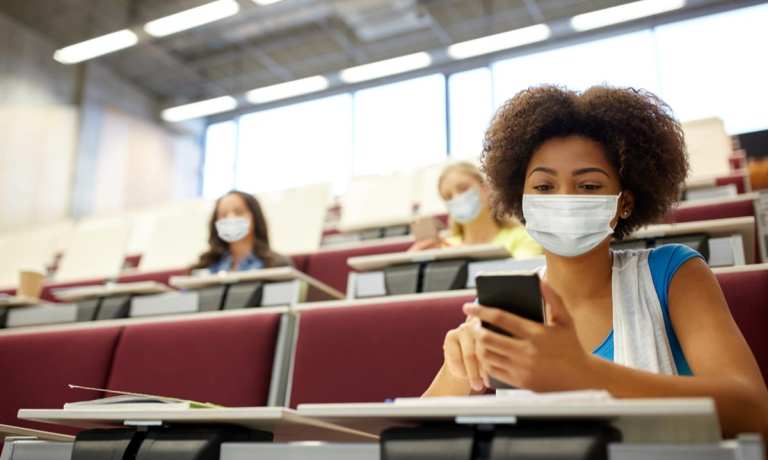Communities across the country that typically thrive alongside the colleges and universities they host are facing an array of COVID-19-era challenges. As the rate of on-campus infections soars among students, faculty and staff, and as regional travel restrictions increase, efforts to maintain normal in-person activities are getting increasingly difficult to defend, leaving colleges – and college towns – in a quandary.
According to a survey of 1,700 U.S. colleges conducted by The New York Times, more than 252,000 cases and at least 80 deaths have been reported on the country’s campuses – the vast majority of which came after students returned to school this fall.
So far, the collegiate response to COVID-19 has been a patchwork of remedies taken on a campus-by-campus basis that range from extreme to ambivalent. Some schools completely shut down and offer only remote classes, while others are open for business and still allow tailgate parties at football games.
“We’re trying to balance safety with some sense of normalcy. Students consider the culture of a place when they select a university. I also think this is important for the continued connection to alumni,” Texas Tech President Lawrence Schovanec told the Los Angeles Times from his skybox overlooking last weekend’s football game, in a state that currently has the largest number of on-campus COVID-19 cases in the U.S.
The head of the Texas Tech Parents Association echoed that sentiment, saying she hears more complaints about students being forced to take classes online than about COVID-19.
Constant Change
Advertisement: Scroll to Continue
Colleges and universities are no different from any other industry, in that they are eagerly awaiting the availability of a safe, large-scale COVID-19 vaccine. In the meantime, they simply have to assess and respond as they see fit while taking into account the various needs and concerns of their diverse constituents. Those range from young students to older professors, as well as people who live and eat on campus and those who go home to other communities on a daily basis.
One of the most pressing challenges schools face is how to handle next week’s Thanksgiving break. Already, schools like Boston University have told students to either stay on campus for the holiday or go home and finish the semester remotely.
“Returning to campus after the break is not a good idea,” Kenneth Elmore, Boston University’s dean of students, wrote in a campus-wide email earlier this month. Students who leave and return must shelter in place for seven days and receive three negative COVID-19 tests before getting permission to resume normal life, Elmore said. He added that public health officials throughout the country “are urging us all to stay put and not travel during this year’s holiday season.”
But in anticipation of the challenges of enforcing such holiday travel rules, many colleges have pre-emptively chosen to revert to online classes. That includes the Universities of Arizona, Missouri and Wisconsin, plus Michigan State.
Working Through It
Other schools have tapped into their own populations and put small armies of students to work as virus contact tracers.
By all accounts, using students to trace other students has advantages, as peer-to-peer contact is less threatening and carries a degree of simpatico. However, it’s not a perfect solution. Student tracers report that one of the biggest hurdles they face is getting kids to answer phone calls from unknown numbers.
Of course, the larger the school, the greater its economic impact when a campus goes partly or fully offline. For example, research conducted by Forbes showed that the University of Alabama was not only the largest employer in Tuscaloosa, but also accounted for almost one-fourth of the city’s total labor force.
And the COVID-19 crisis is not just impacting domestic students. The Chronicle of Higher Education noted that limited flights, closed borders and shuttered consulates have crimped international enrollments at U.S. colleges and universities by 43 percent as the pandemic has stranded tens of thousands of students overseas.
Read More On Education:




